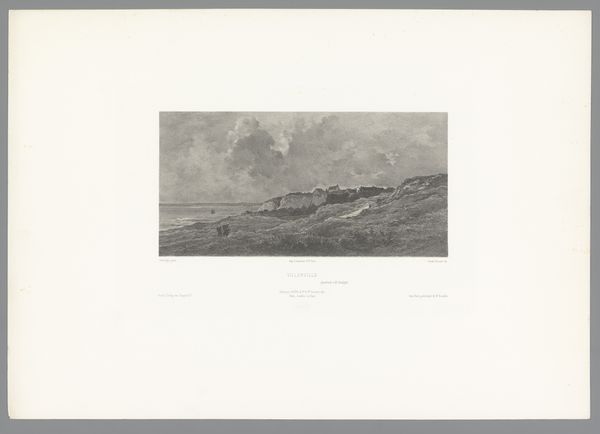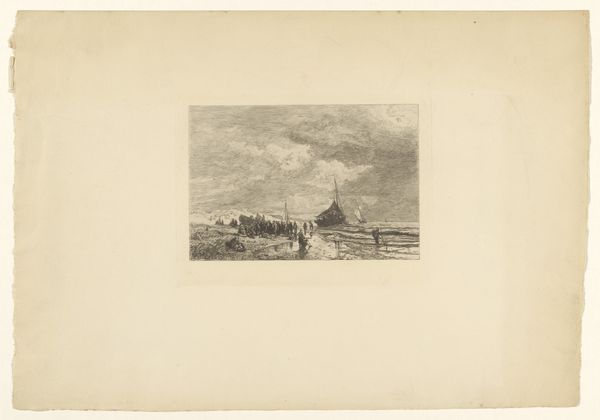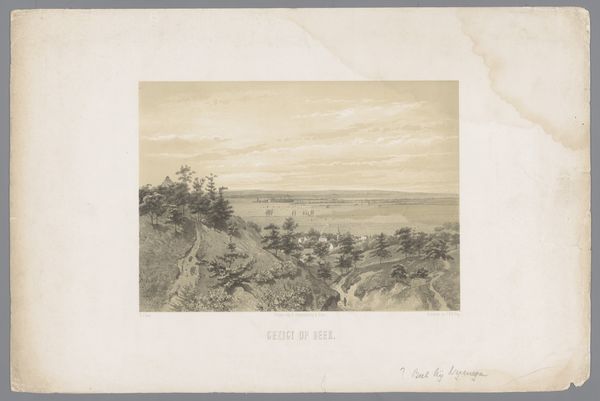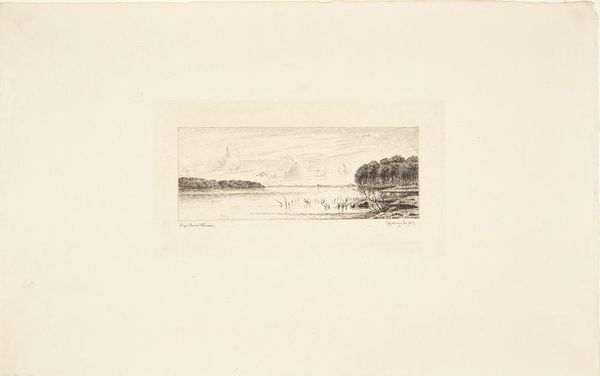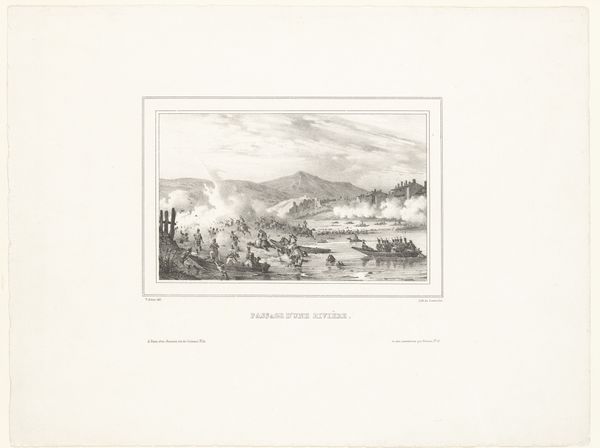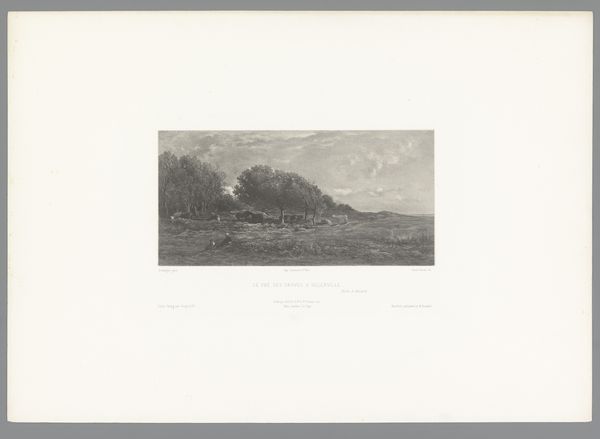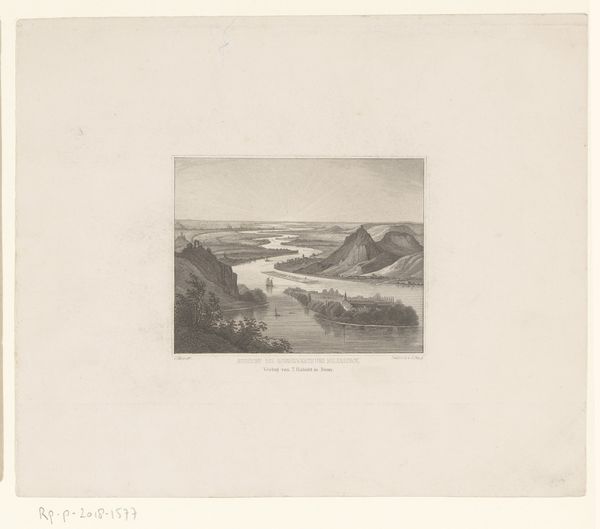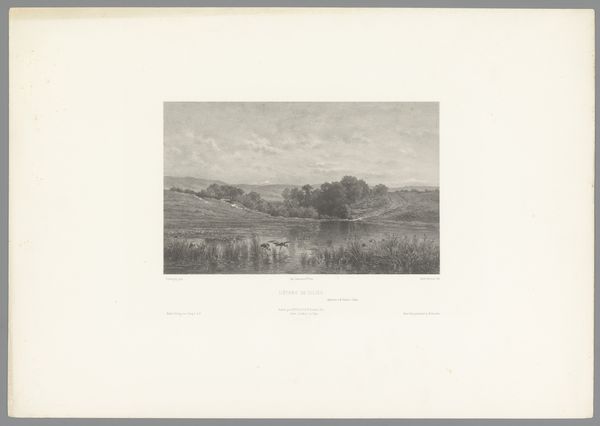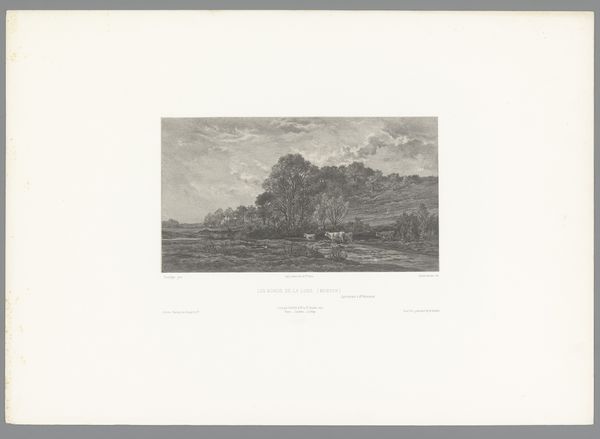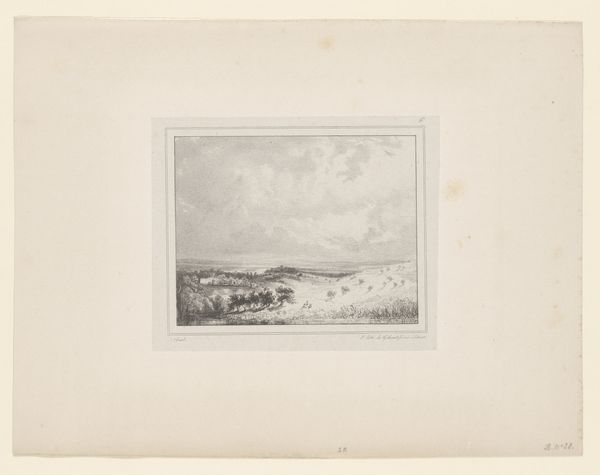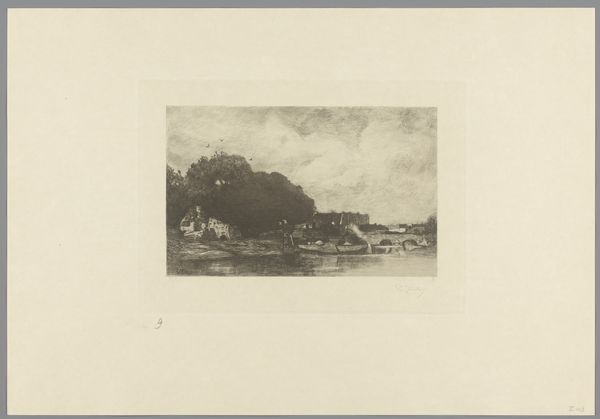
print, engraving
# print
#
landscape
#
engraving
#
realism
Dimensions: height 402 mm, width 570 mm
Copyright: Rijks Museum: Open Domain
Here is Emile Louis Vernier's view of Herblay, meticulously crafted using etching and engraving techniques. These processes, rooted in skilled handwork, were critical for disseminating images in an era before photography dominated. The print is made by incising an image onto a metal plate, inking the plate, and then pressing it onto paper. The lines you see are not drawn, but rather are physically etched or engraved into the metal. This process demands precise control and a deep understanding of materials. Vernier would have needed to master the handling of acids for etching and the use of burins for engraving. The final print bears the marks of this labor-intensive process. The texture of the paper, the depth of the lines, and the subtle variations in ink all contribute to the image's overall effect. By understanding these processes, we can move beyond simply appreciating the image, and recognize the value and skill embedded in the making. This reminds us that even seemingly mass-produced images have a history of craft and human effort.
Comments
No comments
Be the first to comment and join the conversation on the ultimate creative platform.
